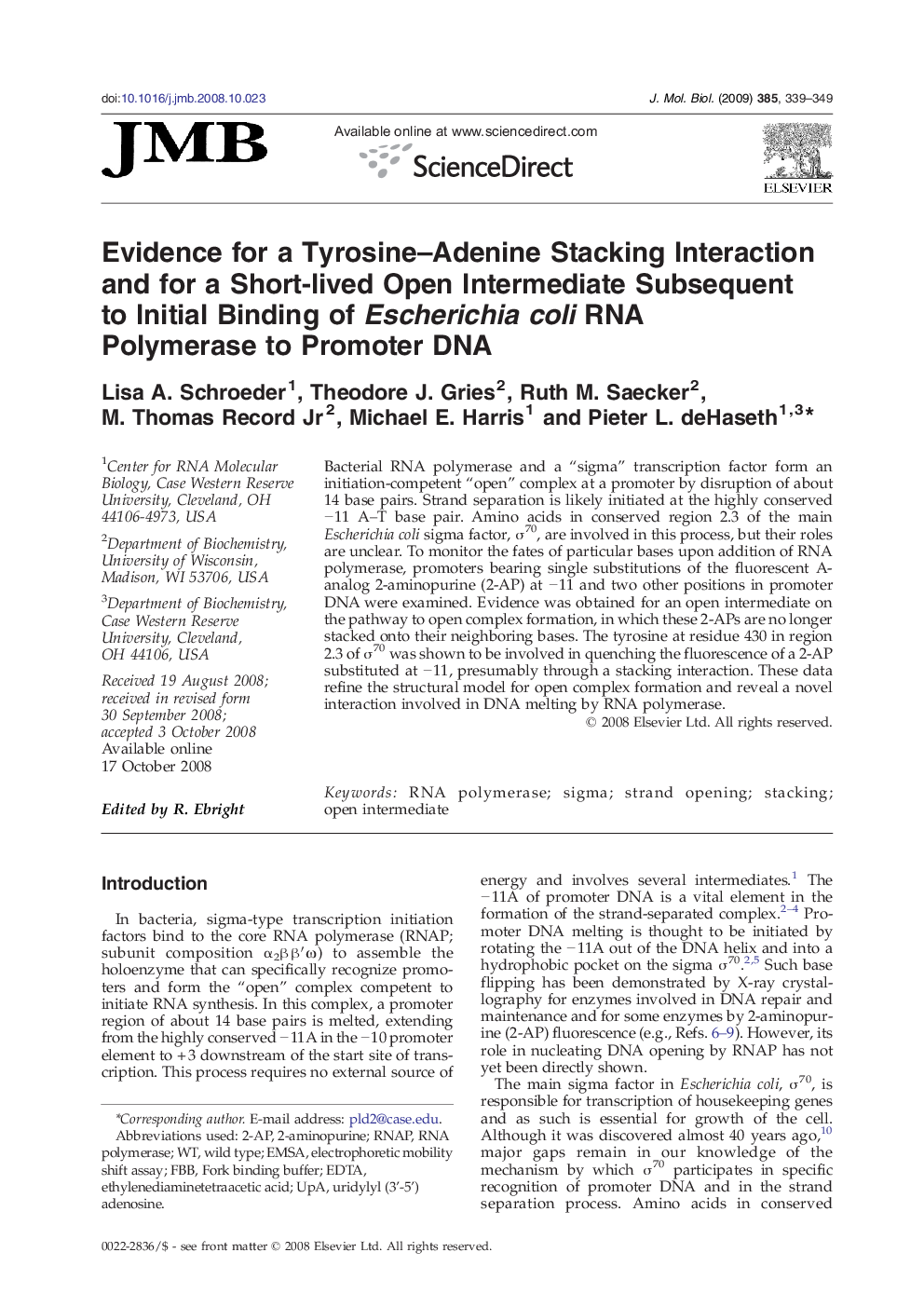| Article ID | Journal | Published Year | Pages | File Type |
|---|---|---|---|---|
| 2187148 | Journal of Molecular Biology | 2009 | 11 Pages |
Bacterial RNA polymerase and a “sigma” transcription factor form an initiation-competent “open” complex at a promoter by disruption of about 14 base pairs. Strand separation is likely initiated at the highly conserved − 11 A–T base pair. Amino acids in conserved region 2.3 of the main Escherichia coli sigma factor, σ70, are involved in this process, but their roles are unclear. To monitor the fates of particular bases upon addition of RNA polymerase, promoters bearing single substitutions of the fluorescent A-analog 2-aminopurine (2-AP) at − 11 and two other positions in promoter DNA were examined. Evidence was obtained for an open intermediate on the pathway to open complex formation, in which these 2-APs are no longer stacked onto their neighboring bases. The tyrosine at residue 430 in region 2.3 of σ70 was shown to be involved in quenching the fluorescence of a 2-AP substituted at − 11, presumably through a stacking interaction. These data refine the structural model for open complex formation and reveal a novel interaction involved in DNA melting by RNA polymerase.
